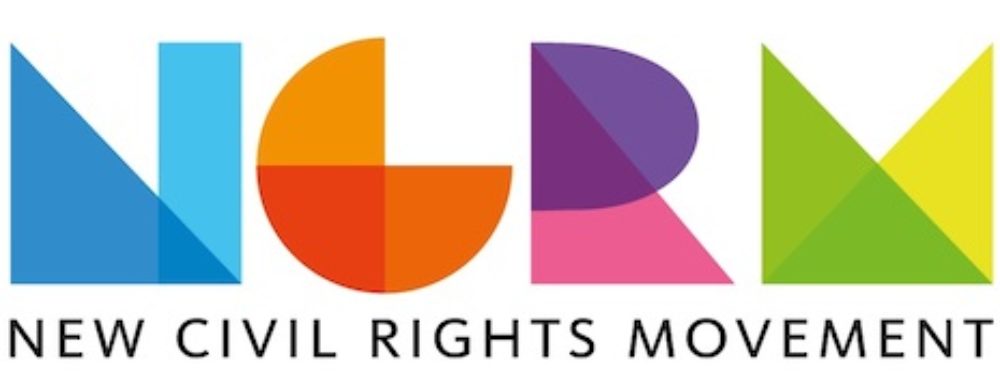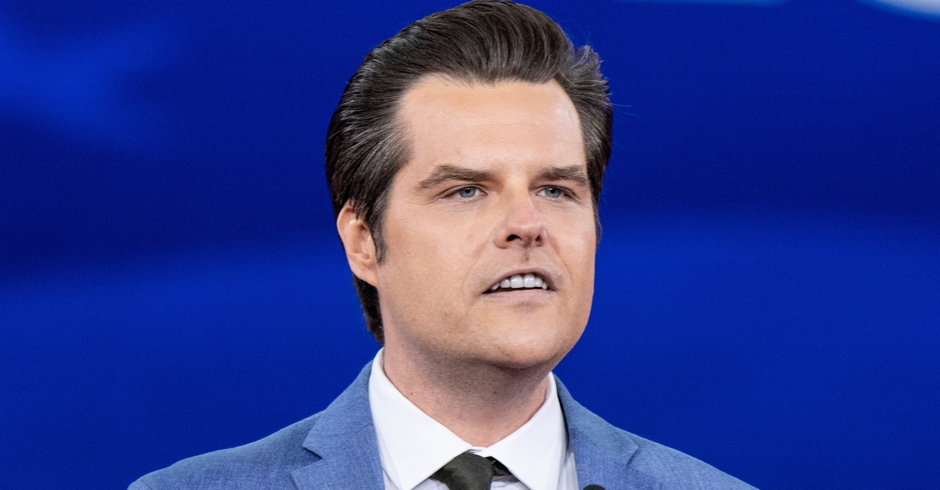On Race and Hulu’s ‘The Handmaid’s Tale’
‘One Woman’s Dystopia Is Another Woman’s Tuesday’
“We lived as usual, by ignoring. Ignoring isn’t the same as ignorance, you have to work at it.” – Margaret Atwood, The Handmaid’s Tale
“I get how it can be news to some of you that people are victimized by systems legitimated by your nation, countrymen, and god. But I’m black and female and southern. I call that Tuesday.â€Â –Tressie McMillan Cottom
Â
(This essay contains spoilers up to episode 7 of Hulu’s The Handmaid’s Tale)
Â
1
I first read Margaret Atwood’s The Handmaid’s Tale in college for a class on feminist writers. From the very first paragraph, the novel was overpowering for me as a black, gay man; Atwood’s novel is about many things, but what struck me most was one theme, and I don’t think I’ve been able to articulate it fully until now: The Handmaid’s Tale is about an American white woman “nigger-ed†by the society that has betrayed her. The most obvious take on the book, of course, is that Offred is dealing with a sexist, patriarchal society run amok. But Offred also wakes up to a changed world and has to negotiate “whiteness†for the first time in her life, and I empathized with her because, at the university campus I attended, I was negotiating a fair amount of whiteness myself.
What gripped me about the book, which I believe couldn’t have been achieved as effectively through the third person, was the way Atwood chose to render the story; Offred’s tale reads like a slave narrative. The book is often compared, as a dystopia, with Orwell’s 1984, or Anthony Burgess’ A Clockwork Orange, but it is also Narrative of the Life of Fredrick Douglass, Ellison’s Invisible Man. The Handmaid’s Tale is about the black experience in America as told by a white woman.
In what was once the United States, now the Republic of Gilead, a reasonably privileged, educated, married, heterosexual white woman now has to negotiate her life as an enslaved black: she is forced to pick up nuances of tone and respond to the whims of personality of the “white folks†around her, her “mastersâ€, the people who own her. Her every moment is circumscribed, she is forbidden to read or write. She even loses her name, the definitive characteristic of the slave experience. She becomes Offred – Of Fred, the commander to whose home she is sent on reproductive assignment, and where she is raped with the authority and sanction of the State. If she doesn’t give birth and is still fertile, she may be reassigned to a different post, where she will then be Ofmark or Ofjohn. The baby, when she gives birth, will be taken from her after she nurses it. Her womb is the property of Gilead. And while we may see the parallels to a black woman’s children being sold during slavery, we are often unable to comprehend the full horror of that historic violation because of the mythology that still prevails about black women’s sexuality, and our inability to have an honest national conversation about slavery in this country. Through The Handmaid’s Tale, however, we are appalled in a quite different way when the women whose children are taken from them are blonde, educated, and named Laura, Becky, Susan, Michelle, June – professional women, women with their own children, their own homes, money, and power. The Handmaid’s Tale is Miss Ann cast as a slave.
In some ways, this is an unfair assessment: Offred, as written by Atwood, hardly feels like a Miss Ann. She has a sensitive voice we trust immediately through her observations, and she is as mystified by the society she finds herself in as we are. I am also aware that I need to be careful here: I have never lived as a woman, white or black, in a sexist society. But if Offred’s experience is about sexism, it is also decidedly about race; which is why a courageous exploration of whiteness is essential to adapting the novel. This is also why there may still be a twinge of revenge fantasy in the story for some readers of color: Offred, in her comfortable white America, is probably a Democrat, but there is no suggestion that she is an activist, or political, unlike her feminist mother. In the book, Offred admits to not attending a protest march because “Luke said it would be futile and I had to think about my family, him and her.†A confrontation about feminist politics between Offred, her husband and her mother, recalled in a flashback, is a highlight of the book. (Offred’s mother, exasperated by her daughter for taking equal rights for granted, represents the “cynical leftâ€.)  Certain readers, while deeply moved by Offred’s tragedy, may also feel like saying to her, “We tried to tell you these right-wing white people were crazy, but you didn’t want to listen or fight back when you were comfortable – when society worked for you – and now it is too late.†(A sentiment shared by more than a few people I know on November 9, the day after Hillary Clinton lost.)
For this reason, I would argue that “blackness†is inherent in The Handmaid’s Tale, regardless of who is cast. And while on one level I admire the decision to blind cast for greater diversity in Hulu’s televised production, it does bring up fascinating questions for the viewer, and diminishes some of the novel’s comments on race, patriarchy and white supremacy.
Â
2
Executive producer and writer Bruce Miller was quoted as saying in defense of the casting, “What’s the difference between making a show about racists and making a racist show?†Miller has a point, but color-blind casting The Handmaid’s Tale, unlike like Shakespeare in the Park, may be like color-blind casting 12 Years A Slave. It is the show’s conceit, for example, that Offred is now in an interracial marriage, with a daughter of color, when she and her husband Luke are attempting to escape over the Canadian border. Her best friend Moira, who joins her at the Red Center where the women are reprogrammed and prepared for their fate as Handmaids, remains gay, but is also re-imagined as black.
In the novel, Offred is aware that her husband has been shot, but only able to speculate about whether he is dead or alive. In the televised series she reveals that he was shot, and her answer seems decisive, final. (In episode 6, we find out he’s alive.) This may seem like a small difference, but it is a difference that matters as it relates to the “black†experience: it is Offred’s constant “not-knowing†that sets the tone of much of her story, the melancholy devastation which defines the book. Part of Offred’s “middle passage†into the slavery of Gilead, and the heartbreak of memory, is that she doesn’t know exactly what has happened to her or the people she loves. She has been removed from her life mid-sentence, she knows she has been given electric shock, and has possibly been drugged, and she is forced to wonder whether her husband, her mother and her daughter are still alive. This dislocation is not dissimilar to the way the reader is thrust into the world of slavery in Toni Morrison’s novel Beloved. (I remember a bronze memorial sculpture by Karl Biedermann I saw in a square in Berlin, of a table with one chair pushed in, the other overturned, called Der Verlassene Raum – The Abandoned Room. No film on the Holocaust that I’ve ever seen, no documentary, affected me the way this piece of art did, or terrified me in quite the same way. I understood something about encountering evil in that moment, the suggestion of how a life can be interrupted, the things that are never resolved.)
Regrettably, the series also decides at the end of the first episode to stray from the book and have Offred say, straight to the viewer, “My name is June.†Later in the series after she reveals her name in exasperation, a character says, “It’s nice to meet you, June.†While this may seem like an act of defiance or modern-day liberation, readers of the novel are forced to imagine what Offred’s actual name is throughout the book (though some may feel there are hints, her name is never confirmed). This anonymity gives her experience another level of horror and anguish and relates to the erasure of her identity and history: we have a deep intimacy with the character, but on some level we never know her and we never will. Offred, nameless in the book, becomes legion: she may be your sister, your neighbor, a woman you knew at work. Atwood could easily have given us Offred’s real name in a flashback, a line of dialogue, but Offred is an “Invisible Womanâ€. If she doesn’t perform her duties, she can easily be replaced by another woman who will become the new “Offredâ€. When she finds out that her predecessor, also Offred (who leaves behind the message “Nolite te bastardes carorundorumâ€), killed herself, we mourn the woman’s death, but we never know who she was – she too remains nameless.
There is a crucial scene in the series in which Offred finds out that her bank account has been frozen, and that she is no longer able to take care of herself without her husband’s help. The society she has known is crumbling, and she is at home, plotting her next move with her husband and best friend – both black. It is a credit to the actors that this scene works at all: it becomes a very different encounter with two black Americans sitting at that table. Watching it, I recalled the reactions of astonishment when Donald Trump was elected – there were my friends who “just couldn’t believe it†and those, usually of color, who felt a wary cynicism that never wavered after the election of George W. Bush, and saw it coming. This is a bit too simplistic along racial lines, and there are exceptions, of course, but Luke and Moira, cast as black Americans, would have a more nuanced reaction to Gilead than the script gives them. An inspired screenwriter would appreciate what they would say to Offred, who, on a certain level, even with a black husband, might be losing her innocence about what her white countrymen and -women are truly capable of.
Samira Wiley gives a riveting performance as Moira, the rebel force who inspires Offred because of her courage to fight and stay alive. The anger and survival instinct in Wiley’s work achieve what black actors have done for decades in films: there are shadings in her performance that suggest a greater experience of blackness than what is in the writing. We see from Wiley’s face that this isn’t the first time she’s dealt with “Gilead†– the only difference is degree. But an unfortunate scene in which Offred and Moira escape from the Red Center, an act which could cost them their lives, has all the suspense of two high school students skipping fourth period biology together. Moira and Offred overpower one of the “Aunts†– the overseers who train the Handmaids and keep them enslaved. Moira steals the Aunt’s outfit, Offred is dressed in her red Handmaid’s garb, and together they leave the Red Center and hit the streets.
This crucial scene is not given any racial context, and it absolutely needs one. The color-blind casting fails spectacularly here. While we see a few black Handmaids in the Red Center, we haven’t yet seen any black women in authority, no black “Auntsâ€. It is not impossible that Gilead would have some black Handmaids and Aunts – a white supremacist society might have black commanders who need babies too, and there is certainly a comment to be made about patriarchy, racism, and black complicity. But we need more than just a few black faces scattered on the screen for a production to be “diverseâ€. Blind casting is truly “blind†in a production like this, if they just take a white actor out and put a black one in, without adjusting the script to reflect “the black experience”. We need to see one of the men confront Moira’s “Aunt†when she passes, and for her to reduce him, as only an Aunt could; we need to see how this black woman can imitate white entitlement and religious fervor when her life depends on it. We need to imagine the experiences that would inform a black Moira: the “Aunt†she imitates may be based on a racist teacher, or a woman her grandmother once worked for as a maid.
There are no bad performances in The Handmaid’s Tale, and yet something feels off in the conception. Ann Dowd is terrifying as Aunt Lydia, but her casting feels a bit offensive. Dowd, as presented here, is a large, “masculine†woman – the Incredible Hulk as a Quaker. When she takes her anger out on the Handmaids she is like the outcast in high school, the girl who is always reading and can’t get a date, torturing the cheerleaders because they are more popular than she is. I’d find this role much more interesting if it were played by Michelle Pfeiffer or, even better, Katie Couric. When I first read the book in the Nineties, I imagined Sandy Duncan. (Aunt Lydia, as written by Atwood, is described as a beseeching woman with rodent-like teeth, given to sentimentality, who “twinkles” and is of “good cheer” – a team player, a company woman.)  The TV character, on the other hand, looks as if she may be someone’s stereotype of a gay woman, which might be a commentary of a different kind. Dowd as Aunt Lydia is presented, without make-up, as a big, “unfeminine†woman. She’s scary as hell, but a little too easy for audiences to hate – Dowd stands outside a certain kind of white female archetype, and she isn’t the actress to subvert it.
And this is basically the problem: Atwood’s book, with few exceptions, doesn’t resist examining whiteness, but the series does, or just doesn’t go far enough. This is the second attempt at filming the novel, and while it is, at times, the superior effort, I dream of a filmmaker who goes all the way in, and isn’t afraid to cast “whiteâ€-white women, white women we love, in the evil roles. (I remember the devastation TV audiences of Roots felt when Robert Reed, the beloved father from The Brady Bunch, sold Kissy Kinte to another plantation for learning to read and write.)
Australian actress Yvonne Strahovski is a much younger, more appealing Serena Joy than in the novel. The character is so beautiful that at times she looks as if she has stepped out of an oil painting – hardly the woman who puts out her cigarette “decisively, one jab and one grind, not the series of genteel taps favored by many of the Wivesâ€, as Offred describes in the book. Serena Joy in the novel is wrecked, and angry, and from this one detail, one imagines, capable of great violence. (This is a character with whom one could start a conversation about American slavery!) Strahovski is compelling, but her Serena Joy says something very different about racism and white supremacy in America than if the character were played by Reese Witherspoon. Witherspoon in comedy, when she’s in the right vehicle, has a gift for revealing the shadow side of the American dream and white womanhood. She’s not afraid to show the insanity of what it means to be an American “girlâ€, the rage behind having to be “perkyâ€. (Consider Reese Witherspoon as Martha Stewart as Serena Joy!)
In episode six of The Handmaid’ Tale, “A Woman’s Placeâ€, we delve into Serena Joy’s past and discover that she has led the movement that helped create Gilead; through her books and speeches, she’s helped encourage women to accept their second-class status. Strahovski’s Serena Joy may recall singer Elizabeth Schwarzkopf during Nazi rule, but, unlike Schwarzkopf, Serena isn’t allowed to “sing†anymore; minutes before she is to give a speech during Gilead’s transition, she is told by her husband that it has been cancelled. The implication is that, despite her higher rank, on some level Serena Joy is as oppressed as Offred (In Gilead, she’s forced to wear teal dresses only and give dinner parties). We don’t get any scenes, however, of Serena Joy on “The View†or “Good Morning, America†or “Fox Newsâ€, rallying the sexist troops, we don’t sense that she loved her career, and hadn’t anticipated what Gilead would personally cost her. As she’s written and played, she seems as depressed in the flashbacks as she is in the present. She’s definitely no Ann Coulter, as some reviewers have suggested. In fact, The Handmaid Tale ladles on so much empathy for Serena Joy that, at times, she seems more bewildered than Offred is.
A friend of mine and I played a game, imagining women we would cast in The Handmaid’s Tale from any era, Debbie Reynolds or Doris Day as Serena Joy, Meg Ryan or Jennifer Aniston as Aunt Lydia. With these “America’s Sweethearts†and “All-American Girls†in the roles as conceived in the novel, we would be forced to explore whiteness and racial violence in ways that would make us all squirm. Because if our whitest icons are exposed and found not to be white, if we finally tell the truth about Scarlett O’Hara, then we may find out that America isn’t white anymore, that it never was. And with the destruction of the myth of American white womanhood, with the acknowledgment that we’re all human, all American, comes the more difficult conversation – how much do you pay the black woman (or her descendants) who raised your children for free for hundreds of years at the expense and sacrifice of her own?
Â
3
Many readers of a book like The Handmaid’s Tale feel protective, and fear that filmmakers are going to “ruin†it. It is impossible to avoid this apprehension when the book is a fan favorite, when it cuts so emotionally deep. Atwood’s novel floods the imagination. And I respect why bringing the novel’s flashbacks into 2016, with references to Uber and Tinder, can make the story more present for women and men of a younger generation, and why color-blind casting may seem the more progressive choice. But inevitably other significant details are lost: Offred recalls when first meeting Serena Joy, for example, that she has seen her before on a Sunday morning gospel program that she would watch as a child before her mother woke. This locates Offred in a time before cable and television offered a thousand options, when there were only a handful of channels to choose from – I remember those Sunday mornings, I remember watching those programs. I also remember pressing my hand, “Poltergeist†style, against the television screen when a TV preacher said something about letting Jesus into my heart. While the TV evangelist, via the 700 Club and Tammy Faye Baker, may be a dated cultural reference, I can imagine an updated Offred who has seen Serena Joy on CNN defending prayer in school (Kellyann Conway as the Commander’s wife.) The critical implication here, which is missing from the series, is that the brainwashing of Offred began early.
In the novel, as Luke is preparing dinner, Offred’s feminist mother says, “Look at him, slicing up the carrots. Don’t you know how many lives, how many women’s bodies, the tanks had to roll over just to get that far?†Luke responds that cooking is his hobby. In the series we lose an opportunity to appreciate how powerless her mother feels, trying to explain to her daughter what she has spent her life fighting for, and the motivation that she feels to smash Luke’s white male privilege and smugness. This scene simply cannot be played the same way with a black man in the role. (And Offred’s mother is sorely missed as a character; in The Handmaid’s Tale there are no heroic women in the series over the age of thirty.)
In “A Woman’s Place”, a female Mexican ambassador visits Gilead to participate in a trade deal. Offred thinks the deal is about oranges, only to find out they are trading Handmaids as sex slaves. During an elaborate dinner given in the ambassador’s honor, the children of Gilead, the fruits of the Handmaid’s labors, are trotted out, Halloween-pageant-style, for all to see: black girls in braids frolic with white boys with blue eyes and blonde hair. (“Racist†Gilead has more diversity than most pre-K schools on New York’s Upper East Side.) When the ambassador first asks her about life in Gilead, Offred lies to her in front of others, but in a final scene when she gives her a gift of Mexican chocolates, Offred reveals that she is miserable, that her daughter has been taken and that she herself has been raped and tortured. In this moment, the irony is not lost that Offred has to ask a woman of color, a foreigner in power, for help. (This scene isn’t in the book.) But when the woman refuses her, Offred steps right up to her face and asks how she can trade women for “fucking†chocolate. In moments like these, Offred gets to be “white†again, and The Handmaid’s Tale, despite Elizabeth Moss’ strong performance, becomes ridiculous. Sassy slaves are usually whipped or sold – Offred gets to tell off world leaders and keep her chocolates.
It is becoming increasingly clear after watching the last episode of The Handmaid’s Tale that the creators have envisioned the production less as a one-time “event†and more as a series that will run for several seasons. If so, this seems profoundly misguided: Gilead envisioned as a place to which viewers will want to return weekly like Thornton Wilder’s Our Town. This must be a business decision rather than an aesthetic one meant to honor the book. Can’t the showrunners see that the claustrophobia of Offred’s daily reality is the key to her story, that part of her testimony is revealed to us through dissociation, and that her will to escape through her mind becomes a powerful comment on how one survives recurring sexual abuse? That brevity is essential to the book’s harrowing effect? Â
By “opening out†the narrative and giving Luke his own episode in “The Other Sideâ€, the story is finally extended into hopeless contrivance: Luke, having been shot, is then taken away in an ambulance, which then overturns, killing the Guardians inside so that he is free to escape. (We later discover that other dissenters are hanged from church rafters, but Luke gets an ambulance to rush him to the hospital; in Gilead, clearly, Black Lives Matter.) Luke, action-figure hero, then meets a traveling group of escapees from TV Screenwriting 101: a blonde woman mute from trauma, a friendly black nun, a gay man, and their feisty white ringleader, an army brat called Zoe.  When Luke insists that they pull their van over so that he can get back to Boston to save his family, Zoe gets her inner “Harriet Tubman†on and pulls a gun on him to save his life. We are then flashed forward three years and discover that Luke lives in a section of Canada called “Little America†(Toronto) and that he is friends with the mute woman.  She still doesn’t speak, but can roll her eyes when he informs her the “coffee” he hands her is really tea because of rationing. (In dystopic societies, Starbucks is the first thing to go.)  It was at this precise moment that I began to despise Hulu’s The Handmaid’s Tale.  An even bigger mystery than who will save Offred from Gilead: who will save Atwood’s novel from Bruce Miller?
Â
4
I was a huge fan of Downton Abbey in its first three seasons, and was interested, and more than a little skeptical, when it was announced that they were to introduce a black character in Season 4. I am usually very sensitive to the absence of diversity on a television show – which is one of the reasons I have never watched more than a handful of episodes of Friends, and can’t bring myself to watch anything by Woody Allen anymore. But surprisingly, I didn’t require a black face on Downton, and when I got it,  was bewildered. The character they came up with, an American jazz musician named Jack Ross, based on an historical figure, who has an affair with Lady Rose Aldridge, was unoffensive, I suppose, but the character didn’t tell me much about being black, or being American, or about jazz, or much of anything else. Part of the problem was that, while the show did allow a few sour glances in Jack’s direction, I knew that Downton Abbey wasn’t prepared to show us how Lord and Lady Grantham would really react to an interracial romance between their aristocratic white relation and a black American in 1920s England. I knew they weren’t prepared to damage the Downton brand, to destroy the feeling on the show that sometimes permits viewers to think, “I wish I could have been a lady’s maid or valet in Englandâ€, or to make the characters we’ve come to love over the years unlikeable by showing them as historically accurate (read racist.) So, while I was glad a black actor had a job, I remember wishing that if they couldn’t be honest about the plot line, they should have just left it alone.
Downton Abbey, however, was in a different position from The Handmaid’s Tale (by the time that black character arrived at Downton, the show had so many other challenges to credibility that an unbelievable black character was the least of their problems). TheHandmaid’s Tale is about a totalitarian society controlled by the religious right. These are the people I watched at last year’s Republican National Convention when Donald Trump was nominated for President, one of the single most frightening experiences I have ever had watching television. I thought hard about The Handmaid’s Tale that night, and Gilead; and Margaret Atwood’s nightmarish fantasy which could “never happen†seemed to be unfolding before my eyes.
In the novel, black people, “The Children of Ham†in the bible, are sent off to the “National Homeland Oneâ€; “Unwomen†– older white women and the infertile – are sent to the Colonies. Basically, Gilead dispatches everyone their society considers garbage and worthless. This felt true to me when I read the book; I saw myself in the story by my absence, and I remember even smiling in recognition, appreciating that Atwood hadn’t condescended to me as a reader. She knew the people she was writing about, and I knew them too. I knew that Gilead, with its white supremacy, wouldn’t give a shit about black men or women, except as a labor force or as sex workers, and that as a gay man, I would be hanged for “gender treachery.†(Some of Miller’s changes do work, and a subplot about a gay woman is very moving.) But it is unclear to me, as the series is conceived now, where, for example, Offred’s interrracial daughter might be, and who would be taking care of her; would she be with a white family, and would they accept a black child, when orphaned black children are hard to place in families, black or white, in 2017? A critical scene from the book, in which Serena Joy produces a picture of Offred’s daughter, who is still alive, as a way of manipulating her, hasn’t yet appeared. Offred has had several clandestine exchanges with both the commander and his wife, yet hasn’t once asked about her daughter’s whereabouts, calling her character into question for the viewer.
Where is the conversation, painful but necessary, in which Wiley’s exasperated black Moira tells her white best friend to snap out of it, in which they are forced to examine entitlement in their friendship as black and white American women – what Moira has assumed about society and June has taken for granted? Despite admiring Wiley’s performance, I must admit to missing “white†Moira from the book. Her punk rebelliousness and disobedience create an important archetype of a white woman who resists patriarchy, who refuses to be cute or girlish, or to “play niceâ€. When black Moira roughs up the Aunt in the bathroom and snatches her cattleprod or taser, viewers may be conditioned to expect a violence reaction from a black woman (Wiley’s smaller size helps subvert this expectation, but defeats her in the escape scene). But when Moira as a white woman kicks white patriarchal ass, something important is being repudiated, something else is at stake, and her rejecting white womanhood has different consequences for the character.
What the series might have done is to have kept Moira white, and created another character whom Offred knew in college, a black woman whose fate she would also have had to speculate on. Or this woman, a close friend, and a mother herself, would be followed in a separate story line; we might see her life in the National Homelands, and find out what happened to her children. The shock for the viewer might be that, had this woman met Offred again and offered her testimony, much like impoverished Americans whose lives didn’t change that much during the 1930s Depression, she might have admitted that life for her in the Republic of Gilead wasn’t really that different from what she experienced living in Flint, Michigan in The United States of America.
I am seven episodes into The Handmaid’s Tale, and while I know what Gilead thinks about homosexuality and women’s bodies, I have absolutely no idea how it feels about race. And that’s a big problem. Because truly to appreciate the intersectionality of the forces against us now, we need to make the connection between an administration that would fight in court for a racist travel ban while threatening to overturn marriage equality and Roe vs. Wade.  In the novel’s concluding “historical notes” Atwood writes, “It’s racist policies…were firmly rooted in the pre-Gilead period, and racist fears provided some of the emotional fuel that allowed the Gilead takeover to succeed as well as it did.”
At a coffee shop in my neighborhood, a woman behind the counter said she couldn’t wait to watch the series, because “I’m way too lazy to read the book.†It’s exciting that the story has been brought to a larger audience, and while there are moments of greatness, what exactly are we experiencing, and what has been compromised?  Atwood’s triumph was taking white supremacy, patriarchy, religious fanaticism, totalitarianism, American slavery and racism, the Holocaust, South African apartheid, violence against gay men and women, and the historical oppression of women throughout the world, most of them of color, and condensing the experience into one character – an American white woman named Offred. Her point was clear by the end of the book and I loved her for it: one woman’s dystopia is another woman’s Tuesday.
To comment on this article and other NCRM content, visit our Facebook page.
Other articles by Max S. Gordon at The New Civil Rights Movement:
Bill Cosby, Himself: Fame, Narcissism and Sexual Violence
Faggot As Footnote: On James Baldwin, ‘I Am Not Your Negro’, ‘Can I Get A Witness?’ and ‘Moonlight’
Image via Facebook
Â

Enjoy this piece?
… then let us make a small request. The New Civil Rights Movement depends on readers like you to meet our ongoing expenses and continue producing quality progressive journalism. Three Silicon Valley giants consume 70 percent of all online advertising dollars, so we need your help to continue doing what we do.
NCRM is independent. You won’t find mainstream media bias here. From unflinching coverage of religious extremism, to spotlighting efforts to roll back our rights, NCRM continues to speak truth to power. America needs independent voices like NCRM to be sure no one is forgotten.
Every reader contribution, whatever the amount, makes a tremendous difference. Help ensure NCRM remains independent long into the future. Support progressive journalism with a one-time contribution to NCRM, or click here to become a subscriber. Thank you. Click here to donate by check.
 |






















